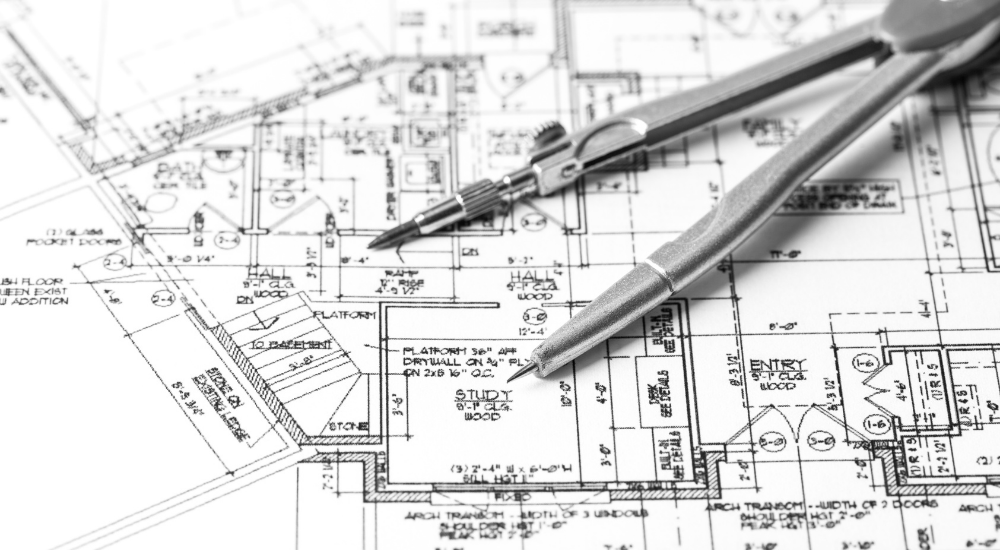Architect Firm Marketing Strategies That Deliver Results
Architect Firm Marketing Strategies That Deliver Results
Blog Article
Comprehending the Diverse Job Paths Available for Aspiring Architect
As an ambitious Architect, you have a world of profession courses waiting for you. Whether you're drawn to standard style or the subtleties of sustainable style, there's a particular niche that aligns with your rate of interests.
Traditional Architecture: Designing Structures and structures
Traditional architecture focuses on developing buildings and frameworks that blend functionality with visual charm. Your layouts can show social heritage, showcasing local practices while meeting modern-day demands.
You'll develop abilities in preparing, model-making, and site evaluation, enabling you to visualize and interact your concepts efficiently. Involving with customers, you'll need to comprehend their vision and equate it right into possible layouts.
Additionally, developing codes and sustainability practices are essential in your job, ensuring your structures are eco pleasant and safe. As you expand in your profession, you'll locate opportunities in domestic, commercial, and even repair projects, each offering distinct challenges. Accepting conventional architecture leads the way for a meeting career that pays homage to the past while forming the future.
Urban Preparation: Shaping Neighborhoods and Public Spaces
As an ambitious Architect, you can play a necessary role as a city coordinator, changing just how communities operate and interact. By employing area engagement approaches, you'll assure that locals have a voice in shaping their atmosphere. Plus, incorporating sustainable style principles will assist produce rooms that not only meet today's needs however also protect the future.
Duty of Urban Planners
While many may believe of designers as the sole enthusiasts behind buildings, urban organizers play an important role in forming the broader landscape of neighborhoods and public rooms. They examine land use, zoning laws, and neighborhood requires to create sustainable environments that boost lifestyle. By collaborating with numerous stakeholders, you'll assist make parks, transportation systems, and houses that promote social communication and accessibility. Urban organizers also concentrate on environmental considerations, making sure that growths incorporate green spaces and assistance biodiversity. Your know-how in spatial layout and neighborhood characteristics permits you to imagine future development while preserving social heritage. In this vital role, you'll straight affect how people experience their environments, making every task a possibility for positive change.
Community Interaction Methods
Reliable neighborhood engagement approaches are important for metropolitan planners to ensure that the voices of citizens are listened to and valued in the planning process. To foster purposeful discussion, you must focus on open online forums and workshops where area participants can share their concepts and worries. By proactively incorporating and listening comments, you'll produce areas that mirror the area's needs, ultimately leading to more lasting and effective city environments.
Sustainable Layout Principles
When developing metropolitan spaces, incorporating lasting design principles is vital for creating environments that thrive both environmentally and socially. You ought to begin by focusing on power efficiency, utilizing materials that decrease waste and advertise recycling. Think about integrating eco-friendly spaces, like yards and parks, to boost biodiversity and boost air top quality. Promoting walkability and public transport can reduce reliance on vehicles, cultivating a much healthier area.
Designing with water preservation in mind is also crucial-- think regarding rainfall yards and absorptive surface areas to manage stormwater. Involving neighborhood participants during the preparation process warranties that the areas you produce meet their requirements and motivate social communication. By welcoming these principles, you'll contribute to lively, sustainable city landscapes that benefit every person.

Landscape Design: Producing Sustainable Exterior Settings
As you discover landscape style, you'll discover crucial layout principles that produce stunning and useful outside rooms. Sustainable practices play a crucial role in making sure these settings thrive while lessening environmental influence. And also, you'll locate a selection of job chances that permit you to make an actual distinction in just how individuals connect with nature.
Style Principles in Landscape
Understanding style concepts in landscape architecture is essential for creating sustainable outdoor environments that integrate with nature. You'll need to consider components like range, percentage, and balance to ensure your layouts feel natural and welcoming. In addition, pay focus to seasonal changes, making with materials that enhance the environments year-round.
Sustainable Practices Overview
Sustainable methods in landscape architecture not only focus on appearances yet also focus on environmental health and wellness and source preservation. You can design rooms that promote soil health and wellness, such as making use of natural products and exercising permaculture concepts. Ultimately, these methods guarantee your layouts benefit both people and the setting for years to come.
Career Opportunities Expedition
With a solid foundation in sustainable techniques, landscape style provides a range of job paths that allow you to make a purposeful impact on the setting. Urban coordinators typically work together with landscape architects to produce environment-friendly areas in city settings, boosting city livability. If you're passionate concerning education and learning, think about coming to be a landscape style instructor, inspiring future generations.
Lasting Layout: Concentrating On Eco-Friendly Practices
As you explore your job in style, accepting eco-friendly practices can establish you apart in a competitive field. Sustainable layout concentrates on creating buildings that minimize ecological impact while improving owner wellness. By including renewable materials, energy-efficient systems, and lasting structure methods, you'll add to a greener future.
Start by obtaining understanding of green certifications like LEED or BREEAM, which can bolster your credentials. Think about how all-natural light, ventilation, and thermal performance can enhance layout. Work together with designers and ecological consultants to introduce services that lower waste and preserve sources.
Don't neglect the importance of community participation-- interesting local stakeholders can motivate designs that integrate with the atmosphere. As clients significantly focus on sustainability, your know-how in environmentally friendly techniques will not just attract jobs but also fulfill your passion for accountable architecture. Accept this critical facet of the profession, and watch your occupation prosper.
Historic Conservation: Shielding and Restoring Social Heritage
While you commence on your building journey, take into consideration the vital duty of historic conservation in preserving our cultural heritage. This field concentrates on the defense and remediation of substantial buildings, websites, and structures that inform the stories of our past. find more information By engaging in historical preservation, you'll help secure the architectural legacy that forms community identification.
As a historic preservation Architect, you'll assess historic significance and assess the problem of frameworks. You'll work carefully with preservationists and historians to ensure authentic restoration methods are employed. This profession path enables you to mix creative thinking with research, allowing you to design services that respect initial materials and craftsmanship.
Your job not just contributes to sustainability by reusing existing buildings however also cultivates a feeling of pride within neighborhoods. Welcoming this path will help you become a guardian of history, maintaining the stories and visual appeals that improve our lives.
Interior Style: Enhancing Indoor Spaces
Historical conservation and interior style both share a commitment to boosting the developed setting, but they focus on various facets. While historical conservation emphasizes preserving a framework's cultural and historical worth, indoor architecture zeroes in on enhancing interior rooms for performance and aesthetic appeals.
As an aspiring Architect, you'll locate that interior design allows you to blend imagination with technical skills. You'll develop spaces that not just look excellent yet also advertise convenience and performance. This field entails comprehending how light, shade, and products connect within a room, influencing state of mind and usability.
You'll work on various jobs, from domestic homes to commercial workplaces, ensuring that each environment meets the requirements of its occupants. By focusing on customer experience, you can transform interiors into functional and inspiring rooms, making a substantial influence on how individuals engage with their environments. Welcome the chance to boost indoor settings and shape the way people live and work.
Industrial Design: Combining Performance With Visual Appeals
Industrial design plays a crucial role in developing items that seamlessly mix appearances with functionality, making sure that what you utilize everyday is not only aesthetically appealing however additionally sensible. As a hopeful Architect, you could immerse on your own in this area, focusing on designing whatever from furniture to customer electronics. Your work entails comprehending customer requirements, products, and manufacturing processes, official source enabling you to develop innovative options that improve daily experiences.
In commercial design, you'll frequently work together with online marketers, designers, and makers, guaranteeing that your designs are not only stunning yet also viable. This profession course offers a vibrant setting where imagination satisfies usefulness, making it a satisfying choice for architects interested in forming the products of tomorrow.
Regularly Asked Inquiries
What Educational Qualifications Do I Required to Become a Designer?
To end up being an engineer, you'll require a specialist level in architecture, typically a Bachelor's or Master's. In addition, you'll have to complete a teaching fellowship and pass the Architect Registration Assessment to practice legitimately.
Are There Accreditation Demands for Different Architectural Job Paths?
Yes, there're certification demands for numerous architectural courses. Architect. You'll require to pass examinations, total teaching fellowships, and in some cases pursue specialized training, depending upon your chosen emphasis, like landscape style, urban design, or historical conservation
What Software Application Abilities Are Vital for Architects Today?

Just How Can I Gain Practical Experience While Researching Style?
You can acquire functional experience by interning at building firms, joining design competitions, offering for community tasks, or teaming up with classmates on real-world jobs. These possibilities improve your skills and construct beneficial connections in the industry.
What Work Opportunities Exist Outside Typical Architecture Firms?
You can check out various task chances outside typical design firms, like metropolitan planning, indoor important site design, landscape design, building monitoring, realty development, or perhaps roles in sustainability consulting. Each deals distinct obstacles and benefits.
Whether you're attracted to conventional architecture or the nuances of lasting style, there's a specific niche that lines up with your rate of interests.When developing city rooms, incorporating lasting style concepts is vital for creating environments that thrive both ecologically and socially.As you explore landscape style, you'll discover important design concepts that produce functional and lovely outdoor areas.Understanding design principles in landscape style is crucial for producing lasting outside environments that harmonize with nature.In industrial design, you'll often collaborate with designers, marketers, and makers, making sure that your layouts are not just lovely however also feasible.
Report this page